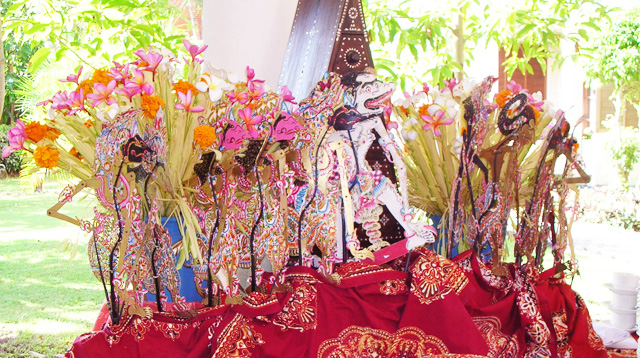AMIDST the modern times like today, traditional arts such as shadow puppet are still sustainable and are developing in Java, Bali and several other regions in Indonesia. Although not as often as before, you can still watch shadow puppet through online media such as YouTube or streaming shows.
By and large, these shadow puppet performances take stories from the epics of Mahabharata and Ramayana. However, some puppeteers also brought up the Panji story which tells the story of Raden Panji Inu Kertapati from the Jenggala Kingdom and Dewi Sekartaji from the Kediri Kingdom in Ancient Java period.
Puppet as an Interior Element
This time we will not discuss about the shadow puppet show, but about the puppets themselves. Apart from being a supporting material for performances, the shadow puppet made from cowhide itself also acts as a work of art commonly used to decorate a room or interior.
The Hindu community in Bali has a culture that is closely related to the arts that grow and develop simultaneously. Both are a series that cannot be separated from one another. As is well known, the art in Bali is also closely related to religious ceremonies, belief and local customs.
Thus, the presence of leather puppet in the room will not only give them an accent of beauty but also bring them closer to the tradition of the shadow puppet art.
Some shadow puppet characters, according to the collector’s wishes, are usually displayed on a guest room wall or inside a showcase so that they are easy to see and give an aesthetic feel.
In addition, Balinese leather puppets are also sometimes used to decorate a room in a party or function. This certainly provides a different atmosphere to foreign guests because it can introduce the elements of art from local wisdom.










